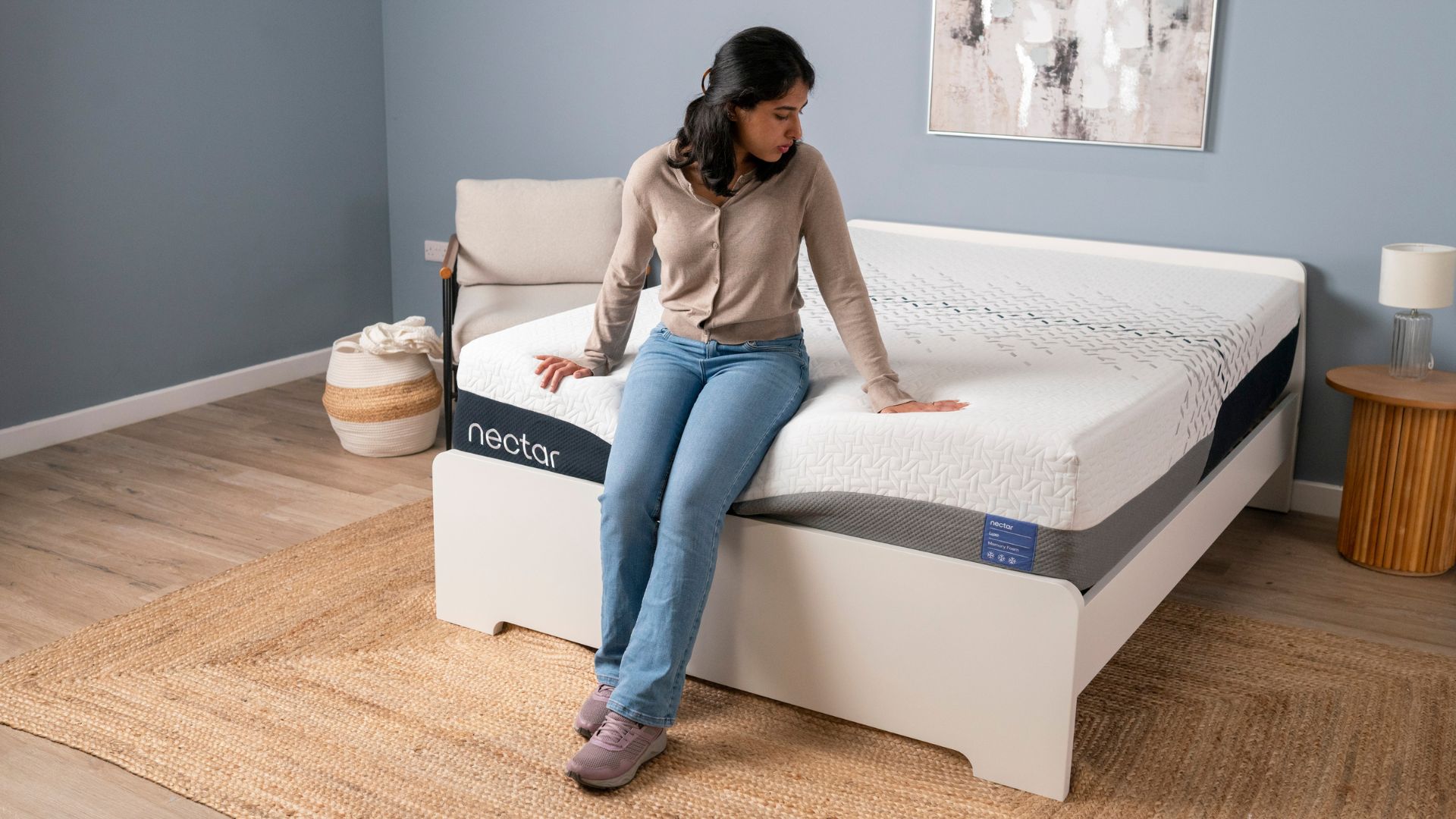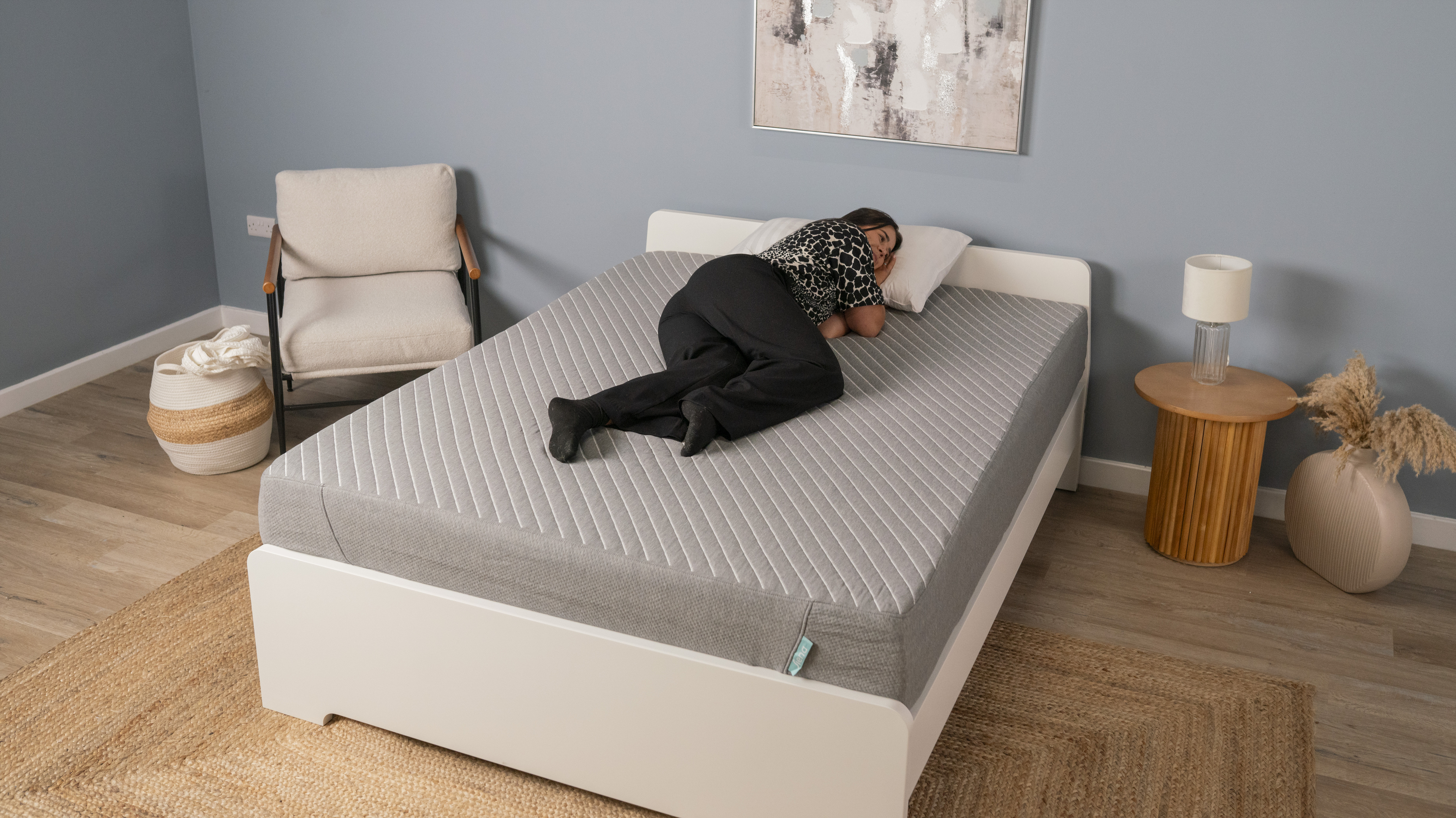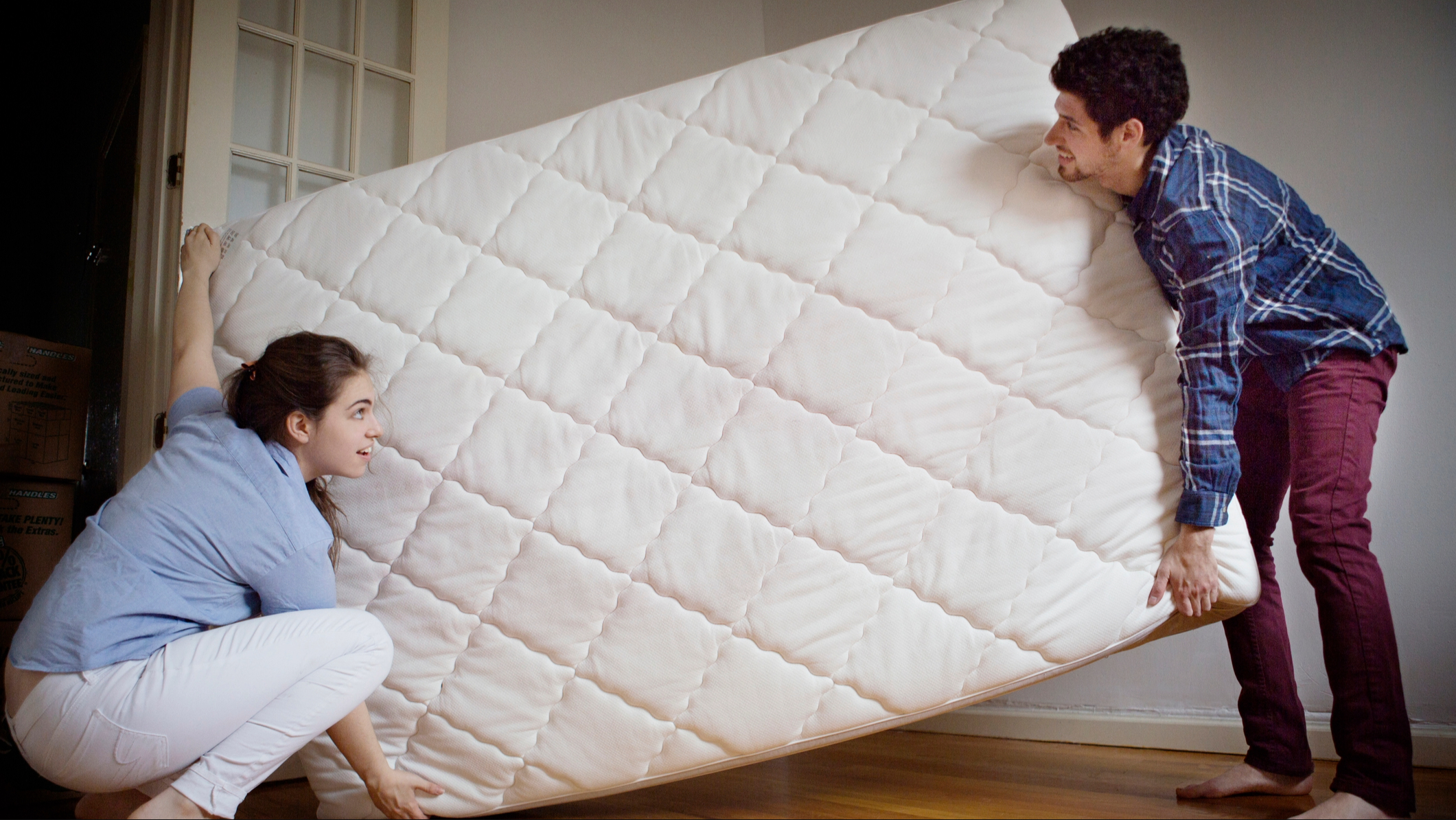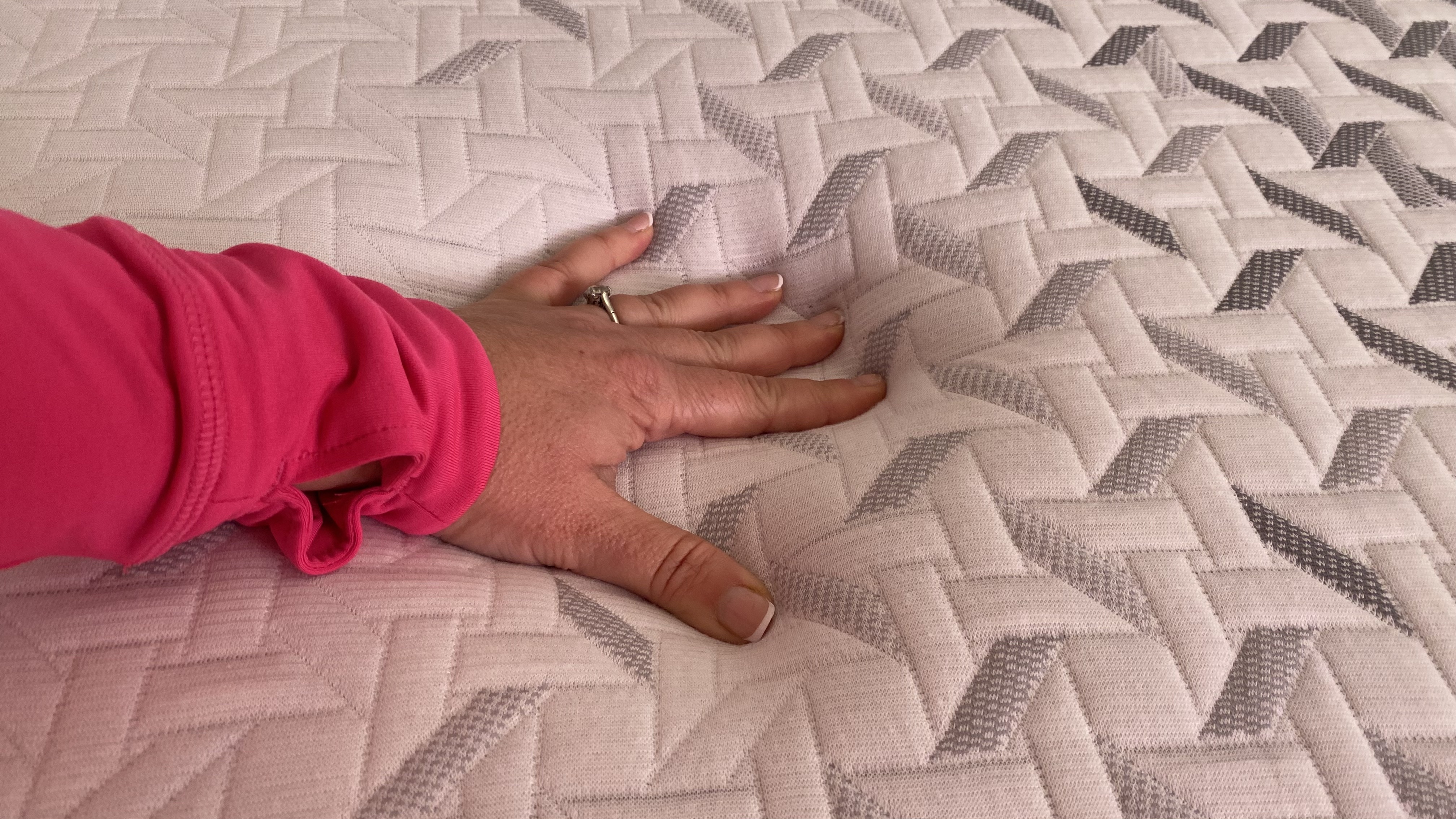How to stop your memory foam mattress sagging in 5 easy steps
Keep your memory foam mattress in perfect shape with these expert tips

Memory foam mattresses are all-foam mattresses featuring (you guessed it!) memory foam, and they're well known for their exceptional pressure-relieving comfort and body-contouring support. But over time, they can start to sag or dip, which can lead to back, neck and joint pain, as well as poor sleep quality overall.
So, if you've purchased the best mattress for your sleep needs, and it's made from memory foam, you’ll undoubtedly want to prevent that from happening. The good news is, there are plenty of steps you can take to ensure it remains in a sag-free condition, and here, we'll share them with you.
Sadly, every mattress does have a lifespan, even with the best of care. So if you're already at the stage where your memory foam mattress is sagging, lumpy and uncomfortable then it could be time to check out the current mattress sales for a replacement. Either way, read on for our top tips to hold memory foam mattress sagging at bay...
Why do memory foam mattresses sag?
Memory foam, also known as viscoelastic polyfoam, is known for its sink-in feel and ability to contour to the shape of your body for pressure relief, but even the best memory foam mattresses can find themselves sagging. Memory foam will lose elasticity and its bounce-back quality over years of use, particularly if your mattress isn't maintained properly.
Generally the lifespan of a memory foam mattress is around six to ten years, so sagging will naturally occur as it’s coming to the end of its life — but there are some factors that cause this to happen sooner.

These include wear and tear, not using a proper bed base, and poor quality foams. Another reason your memory foam mattress may start to sag is if you sleep in the same spot night after night, placing pressure on the same points which can lead to permanent indentions. Once this happens to your mattress, it’s difficult (almost impossible) to regain its original shape.
Your mattress may also sag as a result of exposure excessive moisture (for example, high humidity), water will weaken memory foam and can contribute to the breakdown of the mattress.
Sign up to get the BEST of Tom's Guide direct to your inbox.
Get instant access to breaking news, the hottest reviews, great deals and helpful tips.
5 ways to stop your memory foam mattress from sagging
1. Rotate your mattress regularly
One of the most effective ways to stop your memory foam mattress from sagging is to rotate it regularly (even if you have one of the best hybrid mattresses, you should still make a habit of this).
When you first buy a memory foam mattress you should rotate it every week for the first three months, and after that aim to rotate your mattress every three months.
Don't forget, rotating is not the same as flipping (where you flip the mattress over). You need to rotate the head of the mattress to where the foot of your bed frame is. This ensures the pressure point areas vary, which allows the foam to fully recover and maintain its shape. It's a simple act that will help to distribute any wear evenly across the surface and prevent permanent body impressions.

2. Use a supportive bed frame
Choosing the best bed frame for your memory foam mattress can play a big part in the prevention of sagging. Memory foam mattresses need solid, even support across the entire surface.
Ideally, your frame should be a divan or a slatted base with the slats placed no more than 3" apart. If your bed frame has wider gaps between the slots then the mattress can sink in between the slats, which can speed up sagging.
One important note: Don’t be tempted to place your mattress on the floor. It might be a solid surface, but it's not great for ventilation and can lead the foam to retain heat and moisture. That may mean mattress mold growth and dust mites.
3. Swap sleeping positions
We get it, it can be hard to control your body once you’re asleep. But if possible, try to vary your sleep position (or if you sleep solo, try to alternate between different areas of the mattress.)
This can significantly reduce the risk of your mattress sagging. When you consistently sleep in the same spot and the same position, you're placing ongoing pressure on the same points of your mattress, which then lead to permanent indentations.

4. Buy a mattress topper
A high-quality mattress topper can help maintain your memory foam mattress for longer by providing a barrier layer between you and the foams. Look for a topper that is at least 2" or 3" thick and made from good quality durable materials, like latex or high-density foam.
A mattress topper will act as a buffer and absorb some of the wear and tear that would normally be directly on your mattress. It can also help to redistribute weight more evenly across the surface.
Do be aware that mattress toppers can be masking the issue, especially if you’re placing it over an already sagging mattress. If that's the case, you may ultimately need to replace your mattress.
5. Check your warranty
Not all sagging is normal. If you notice significant sagging in your memory foam mattress, especially within the first few years of ownership then it’s worth checking whether it can be replaced or repaired under your warranty.
Many manufacturers consider sagging beyond a certain point (usually around 1.5" but you'll need to check a brand's guidelines for details) to be a defect covered under warranty. So, if this happens to you, document the sagging with measurements and photographs and contact your mattress manufacturer.
However, brands only cover manufacturing defects within their warranty periods, and they expect you to maintain your mattress to a decent standard based on care guidelines. That can include avoiding stains (getting one of the best mattress protectors can help here), rotating your mattress often, avoiding misuse such as jumping or standing on the bed, and using the right foundation. Obvious signs you haven't followed these instructions can lead to the manufacturer to void your warranty.

Is it normal for a memory foam mattress to have body impressions?
Slight body impressions in memory foam mattresses are normal and should be expected as it’s part of how the viscoelastic material works to provide personalized comfort.
However, these indentations should be temporary and your mattress should return to its original shape quite quickly. Indentations deeper than 1" are generally considered excessive and may mean you have a problem.
One of the key ways you can distinguish between normal body impressions and problematic indentations is whether you're feeling uncomfortable (because of the uneven surface of your mattress), whether you’re waking up with back or joint pain (as any deeper indentations are going to lead to less support for the spine and possibly misalignment) and whether you’re struggling to get in and out of bed.
If you are a heavier sleeper of 250lb or more and noticing deeper indentations, you may not have a mattress that can support you fully, leading to sinkage and those deep, lasting impressions. Since that's neither comfortable or good for your bed's lifespan, you may wish to consider one of the best mattresses for heavier people instead.

Rachael is a freelance journalist based in South Wales who writes about lifestyle, travel, home and technology. She also reviews a variety of products for various publications including Tom’s Guide, CreativeBloq, IdealHome and Woman&Home. When she’s not writing and reviewing products she can be found walking her Sealyham and West Highland terrier dogs or catching up on some cringe-worthy reality tv.
You must confirm your public display name before commenting
Please logout and then login again, you will then be prompted to enter your display name.
